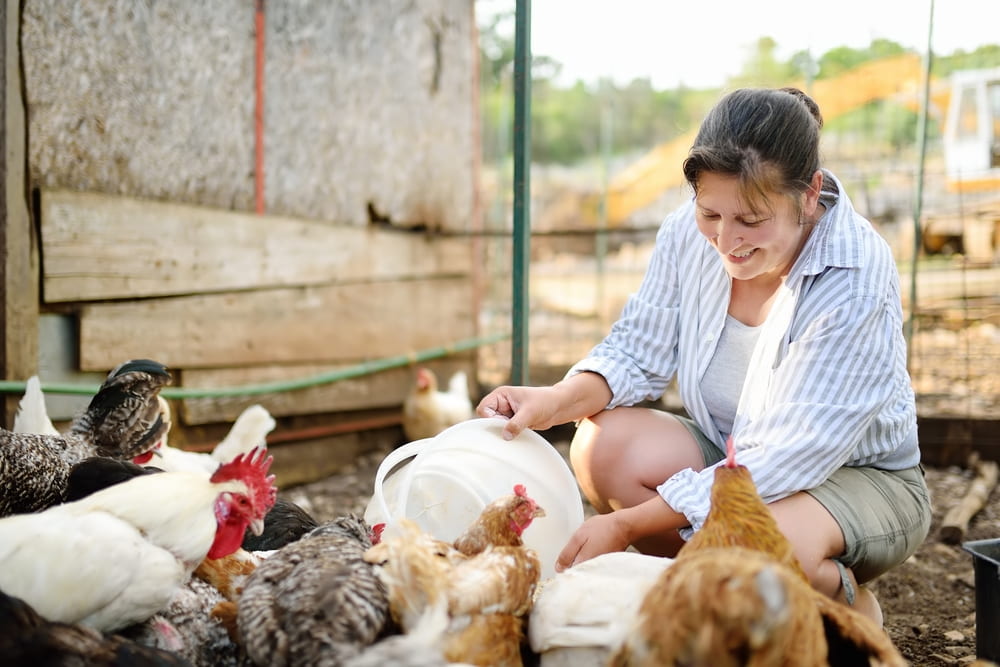What Are Chicken Mites & How Do You Treat Them?

Chicken mites are a common problem for backyard flocks, but dealing with them doesn’t have to be daunting. Understanding what chicken mites are, recognizing the signs of an infestation, and knowing how to treat and prevent these pests are essential for maintaining a healthy coop. This guide provides practical advice to tackle mite problems head-on, ensuring your chickens remain happy and healthy.
What Exactly are Chicken Mites?
Chicken mites are tiny parasitic arachnids that prey on chickens, causing irritation and discomfort and potentially transmitting diseases. These pests are mainly nocturnal, hiding in dark crevices during the day and coming out to feed on your chickens’ blood at night. Recognizing and controlling these pests early can save you and your chickens from distress.
What do Chicken Mites Look Like?
Detecting chicken mites can be challenging due to their minute size. Typically, they are just 1 to 2 millimeters long. When unfed, they might appear as minuscule pale or gray dots. Once they have had a big meal, they turn a dark red or black, making them slightly easier to spot during a thorough chicken check-up, especially under the wings and around the vent area.
What are the Different Types of Chicken Mites?
- Northern Fowl Mite: The most common poultry pest, this mite lives its whole life on chickens. Infestations are visible around the vent, where they make feathers look dirty due to their blood-engorged dark color.
- Red Roost Mite: These mites pose a challenge as they can survive for months without feeding, hiding away in coop crevices by day and feasting at night, appearing red to black in color.
- Scaly Leg Mite: This sinister pest burrows under the scales on a chicken’s legs, causing severe irritation and deformity. Their activity can lead to thickened, scaly legs, a telltale sign of infestation.
4 Signs of Chicken Mites
Identifying the early signs of a mite infestation is crucial for effective and fast treatment. Mites can cause a wide range of symptoms in your chickens, and being vigilant about these signs can help you take timely action and prevent more serious health issues.
- Feather Damage and Loss: Mites primarily feed on chickens' blood, often leading to feather damage and loss. You may notice that the feathers around the vent, under the wings, or on the back look sparse, broken, or completely missing. This is not just a cosmetic issue; it can significantly affect the chicken’s ability to regulate its body temperature and protect itself from the elements.
- Scratching and Agitation: One of the most noticeable signs of mite infestation is increased scratching and agitation in your flock. Chickens infested with mites are typically more restless due to the irritation and discomfort caused by mite bites. They may frequently peck at their skin or rub against objects to relieve itching.
- Decrease in Egg Production: Stress from mite infestations can lead to a noticeable decrease in egg production. Chickens under stress will often redirect energy from laying eggs to dealing with the discomfort and energy drain caused by mites, leading to fewer eggs. If you notice a sudden drop in your flock’s egg output, checking for signs of parasites is a good idea.
- Visible Mite Droppings: Another clear indicator of a mite problem is the presence of tiny black specks in the nesting areas. These specks are mite droppings and can be found on eggs, in nesting material, and around roosting areas. Their presence suggests an active infestation. If you see these specks, immediately treat and clean the area.
How To Treat Mites on Chickens
Here are some reliable methods to rid your chickens of these unwelcome guests:
- Diatomaceous Earth: Applying food-grade diatomaceous earth helps kill mites by dehydrating them. However, it should be used carefully to avoid respiratory issues in chickens.
- Pesticidal Dust: Choose mite-specific pesticidal dust that is labeled safe for poultry, focusing on the birds’ feathers and coop bedding.
- Cleaning and Sanitizing: A deep clean of the coop is essential. Remove all bedding, wash surfaces with pest-control soap, and apply an appropriate pesticide.
How To Prevent Chicken Mites
Preventing mites is way easier than eliminating an infestation. This is what you need to do:- Regular Cleaning: Keep your coop immaculately clean and dry, regularly changing bedding and removing manure.
- Coop Maintenance: Seal up cracks and crevices to eliminate mite hiding spots.
- Health Checks: Regularly inspect your chickens for signs of mites, catching issues before they escalate.
Understanding and addressing the issue of chicken mites is vital to maintaining a healthy flock. To find the best feed tailored to your chickens’ needs, visit Kalmbach Feeds. Discover our range of premium poultry products today and give your chickens the complete care they need to thrive.